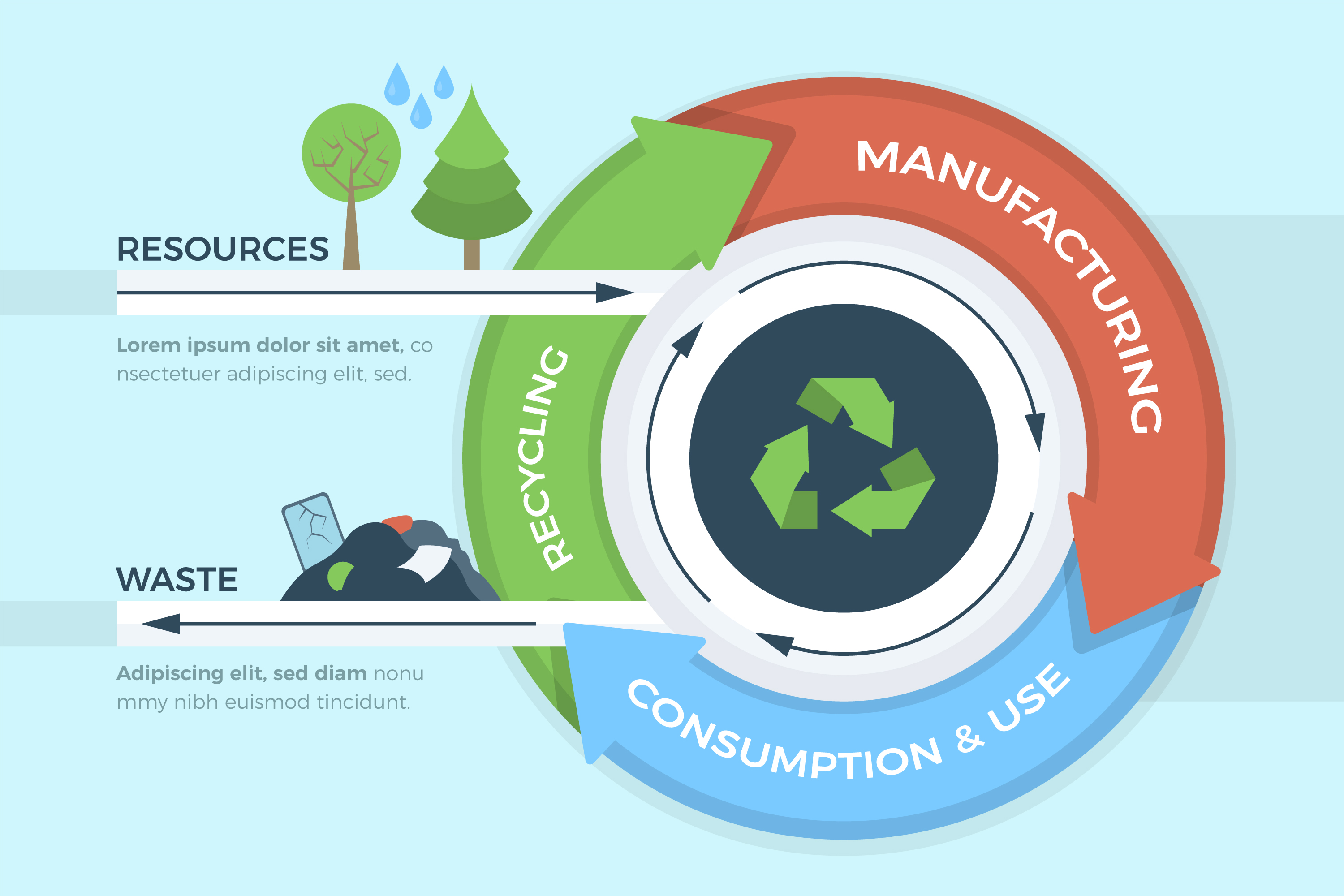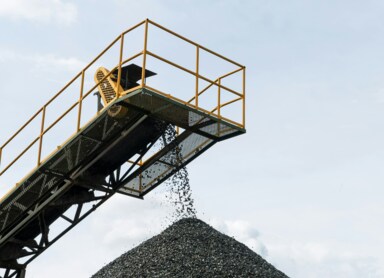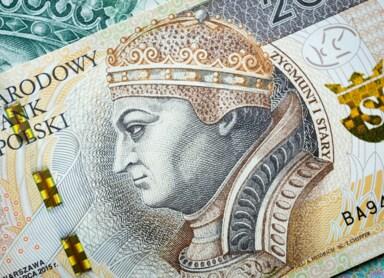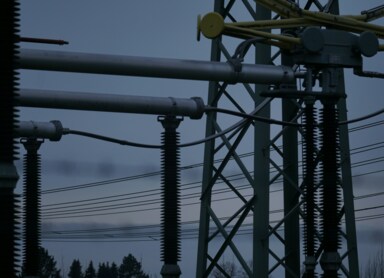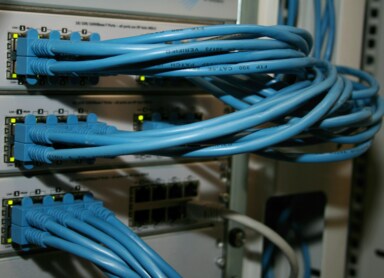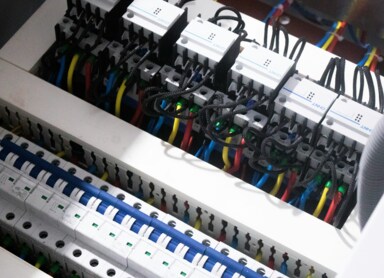Closed loop economy - key principles
Sustainable Development of Enterprises Should Assume Breaking Away from the Exploitative Model of Using Natural Resources in Favor of a Circular Economy (CE). What is This Business Management Concept and What Challenges Does a Business Face When Implementing CE?
Sustainable Development of Enterprises Should Assume Breaking Away from the Exploitative Model of Using Natural Resources in Favor of a Circular Economy (CE). What is This Business Management Concept and What Challenges Does a Business Face When Implementing CE?
What is a Circular Economy? Explanation of the Concept
A Circular Economy (CE), sometimes referred to as a circular economy (ang. Circular Economy), stands in contrast to the linear model used for centuries. The linear model of the economy assumed actions that today are considered exploitative of the environment, following the principle of "Take, Make, Use, and Dispose." Although the concept of CE appeared in publications as early as the 1970s, there is no single, universal definition of the term. It should rather be seen as a general concept and paradigm of action.
The idea of CE is based on keeping resources that have already been obtained in circulation for as long as possible by taking various actions towards them. This reduces consumerism, lowers production costs, and eases the burden on the environment, allowing natural resources to at least partially regenerate.
The Circular Economy is part of the sustainable development concept, assuming that resource management should not limit this right for future generations. For many companies engaged in production or processing, CE brings significant challenges and heralds far-reaching changes, especially since the linear model of resource management has become well entrenched in the global economy.
Is the Circular Economy Only a Challenge for Poland?
The need to implement a Circular Economy is not only a problem for Polish entrepreneurs. The EU legislator has been consistently preparing studies for decades that aim to encourage companies to use natural resources more consciously. Selected publications in this field include:
- The communication "EUROPE 2020: A Strategy for Smart, Sustainable, and Inclusive Growth";
- The communication "A Resource-Efficient Europe – Flagship initiative under the Europe 2020 Strategy";
- The economic report on the potential of the CE model titled "Towards the Circular Economy";
- The statement “Manifesto for a resource-efficient Europe”;
- The communication "Closing the loop – An EU action plan for the Circular Economy".
Supporting actions aimed at a closed-loop with products is also visible in the ESG reporting system. Among environmental indicators, there are actions dedicated to reducing the exploitation of natural resources, preventing environmental pollution, and reducing energy consumption.
The Polish legislator has regulated CE issues in a series of legal acts. These include the Act on Counteracting Food Waste, the Act on Waste Electrical and Electronic Equipment, and the Act on Packaging and Packaging Waste Management. These legal acts impose many obligations on SMEs, the non-compliance of which carries the risk of sanctions.
Why Should Companies Implement a Circular Economy?
Implementing the principles underlying CE is important for companies for many reasons. Firstly, extending the lifespan of products means reducing manufacturing costs and lower energy consumption. Another advantage relates to fulfilling ESG reporting requirements. Currently, it applies only to the largest entities, but over time, the scope of the new regulation will become broader. Adopting and fulfilling specific environmental obligations means compliance with requirements.
Finally, adhering to CE principles means building the image of a conscious and responsible market player, one who cares not only about the rapid development of their business but also the broader ecosystem in which the business operates.
Key Principles and Processes of a Circular Economy
A Circular Economy can and should be implemented at every stage of the product life cycle. This model is sometimes referred to as "from cradle (of the previous product) to cradle (of the next product)" (ang. cradle to cradle).
- Design Phase: At this stage, CE can be implemented through resource-saving, eco-friendly design, and preventing product obsolescence.
- Production Phase: Companies producing various goods on a large scale and generating significant amounts of waste should strive to make technological processes as efficient as possible by introducing innovative solutions. Literature highlights the importance of assessing the energy efficiency of machines and buildings, the EMAS Eco-Management and Audit Scheme, and the Environmental Technology Verification (ETV) system.
- Usage Phase: At this stage, it is important to raise social awareness regarding rational consumption of goods. It should be noted that initiatives can be promoted not only by government agencies but also by entrepreneurs, who often classify spending on environmental campaigns as deductible expenses.
- Waste Management Phase: This involves applying various solutions to give products a "second life." Concepts closely related to CE include recycling and upcycling, which also refer to processes that maximally extend the usability of once-acquired resources.
An example of an activity that fits into the CE concept could be generating energy from renewable sources (e.g., photovoltaics, wind power) or purchasing it from a supplier under a Power Purchase Agreement (PPA).
The Role of a Circular Economy in Climate Protection
The role of CE in climate protection cannot be overstated. Reusing the same products multiple times and extending their life cycle contributes to conserving natural resources. This, in turn, reduces environmental degradation and threats to flora and fauna.
Lower industrial production means a reduced carbon footprint, and using renewable energy sources helps to limit the consumption of conventional fuels like wood or coal.
The challenges that entrepreneurs face in this regard are usually economic and involve the need to implement new technologies and an entirely different business model. In the long run, however, such actions will certainly pay off, regardless of ESG obligations or national legislation. After all, we all live in the natural environment.
Undoubtedly, creating efficient CE mechanisms requires not only extensive legislative actions but also significant financial investments from entrepreneurs. However, making small steps to introduce big changes is worth it. With the support of Reo.pl you can implement an eco-friendly business model in your organization.
